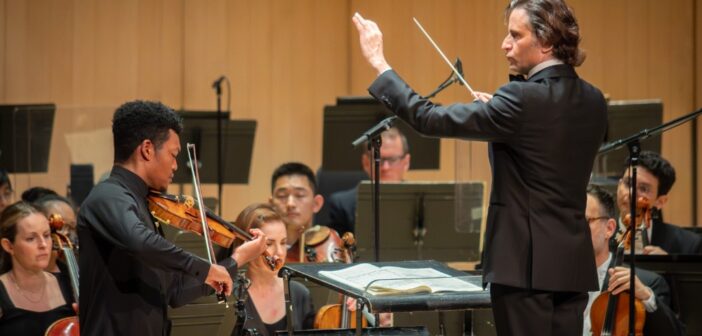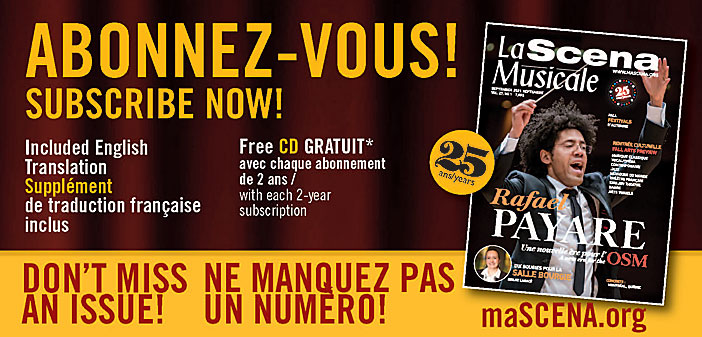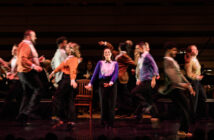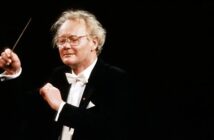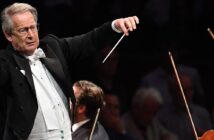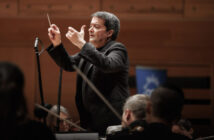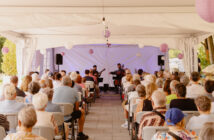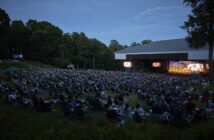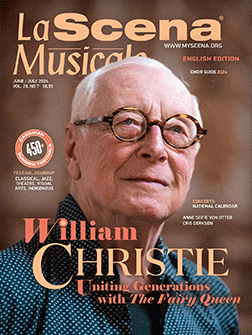The Toronto Symphony Orchestra’s (TSO) eclectic June 6 program pulled together a disparate selection of works by Canadian, German, Hungarian and Austrian composers ranging over four centuries. If it was difficult to ascertain a dramaturgical connection between them, individually, they each had something to offer.
TSO CAMH Art of Healing
To start, TSO CEO Mark Williams took the stage alongside President & CEO of the Centre for Addiction and Mental Health (CAMH) Sarah Downey to speak about their Art of Healing program, in collaboration with Shkaabe Makwa—the Centre for First Nations, Inuit, and Métis Wellness. Art of Healing brings together traditional knowledge and medical expertise in the establishment of a culturally safe space to support patients’ mental well-being. A video outlining the aims of the program featuring French-Canadian/Métis composer Ian Cusson was also presented.
Cusson premiere
One of Art of Healing’s outcomes is Cusson’s Ikiru (2023) which received its world premiere at this concert. As in his opera Of the Sea presented by Toronto’s Tapestry Opera in 2023, Cusson excels in creating rich, evocative orchestrations that allow individual sections and soloists to shine. A beautiful example of this in Ikiru is the flute duet near its start that dissolves into mild dissonance just before being subsumed into larger orchestral textures. There’s a sense of tonal clarity throughout the piece, even in fortissimo sections that are never muddy. The work ends with a hopeful horn solo that seems to embody the conciliatory aims of this TSO/CAMH partnership.
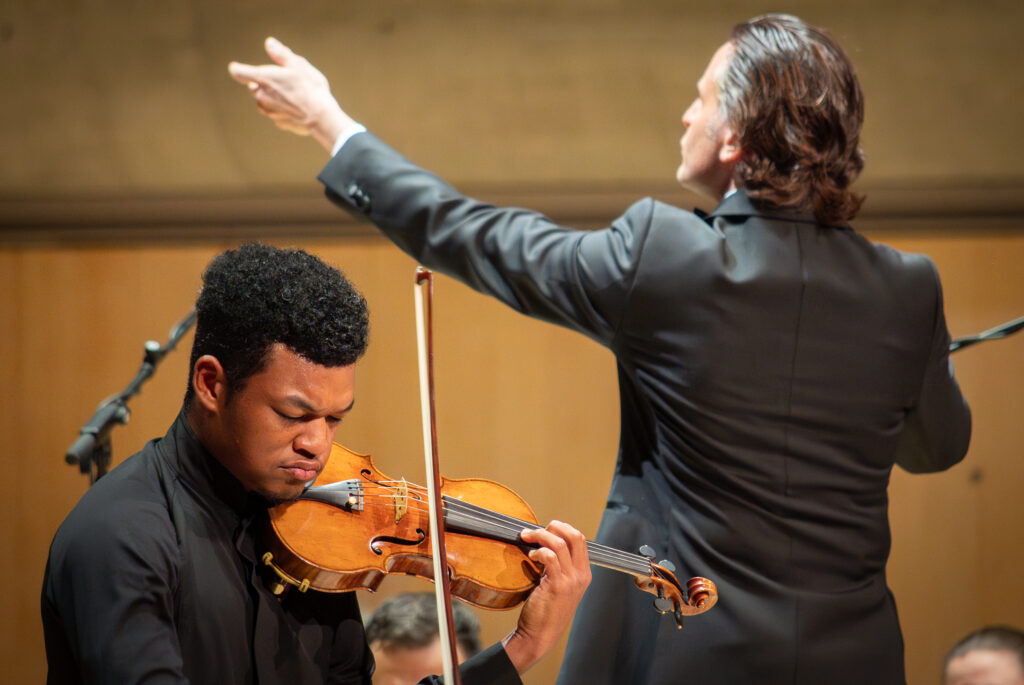
Randall Goosby and Gustavo Gimeno. Photo: Allan Cabral/TSO
American violinist Randall Goosby was the featured soloist in Mendesssohn’s Violin Concerto in E minor, Op. 64. The young artist, still only 28, boasts an exclusive Decca Classics recording contract and plays with all the top orchestras in North America (Boston, Pittsburgh, Seattle) and Europe (Rotterdam with Nézet-Séguin, Hamburg and Milan). The Mendelssohn concerto is one of those very familiar, comforting works that audiences love to return to. Goosby imbued it with sweet tone and a contained demeanour.
Virtuosic runs and arpeggios in the second movement’s cadenza, and the tripping fairy music of the final section were all dispatched with impressive velocity and clarity. A minor quibble in the midst of such overall technical skill came in the form of tuning issues in descending passages near the start. Goosby rewarded his standing ovation with African-American composer Coleridge-Taylor Perkinson’s “Louisiana Blues Strut” bringing, in his words, a bit of Southern warmth to Toronto’s (albeit, very hot 30 degree celsius) North.
Bartók energy
TSO Music Director Gustavo Gimeno gave a short introduction to the second half, making a rather tenuous geographic association between Bartók and Mozart’s centres of activity in Budapest, Prague and Vienna. Nevertheless, Bartók’s Divertimento for String Orchestra (1939) proved to be the evening’s highlight. Maybe because this was a rarity for the TSO musicians, they seemed more energised and inspired than elsewhere in the program.
The work plays with older Classical forms, notably the concerto grosso, in which a smaller solo section (well taken here by the section leads) alternates with the larger complement of 22 strings. The open tonalities of the first allegro section sound remarkably similar to another throwback work of the early 20th century, Vaughan-Williams’ “Fantasia on a Theme by Thomas Tallis” (1910) which similarly exploited the concerto grosso format. Would Bartók have been aware of this British antecedent?
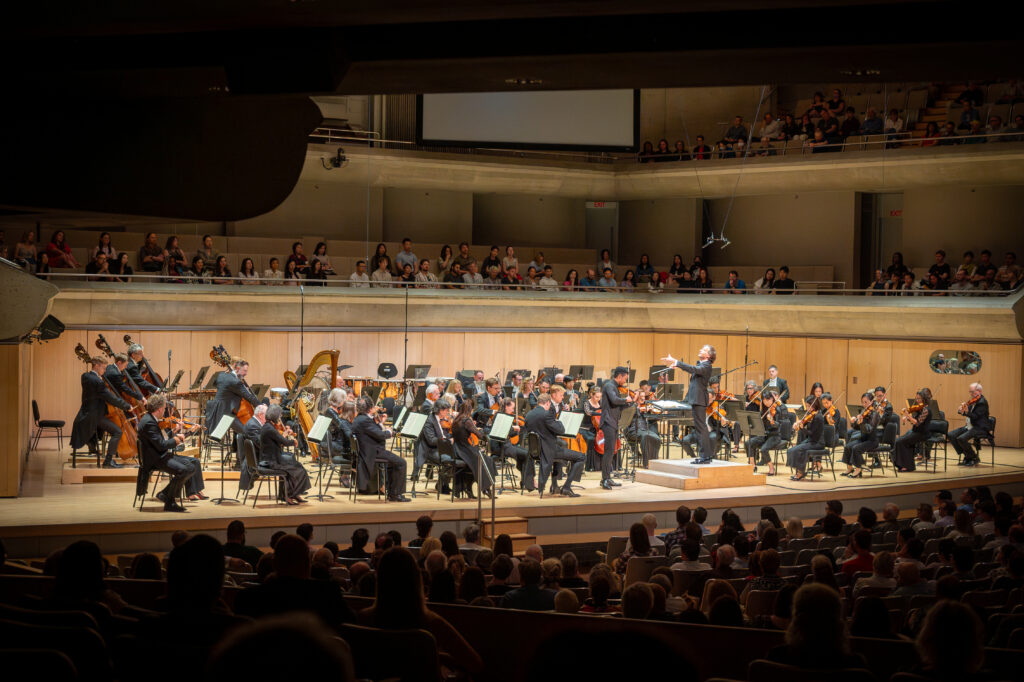
Randall Goosby, Gustavo Gimeno and the Toronto Symphony Orchestra. Photo: Allan Cabral/TSO
Both these composers were also key in collecting and finding inspiration in their native Hungarian and British folk music traditions. In the Bartók, this comes to the fore with the third movement’s Roma, waltz and barn dance rhythms. The ominous, wheedling strings that open the second movement hearken back to Bartók’s operatic masterpiece, Bluebeard’s Castle (1911) with the strings conjuring up images of the murderous duke’s legacy of dead wives.
Mozart in Prague
The program concluded with Mozart’s Symphony no. 38 in D Major, better known as the “Prague” symphony. Gimeno coaxed a well-nourished sound that carefully balanced the line between a modern and more ‘period’ aesthetic. Everything was decently-played but lacking in much visible or audible excitement on the part of the orchestra. It’s the end of a long season, and preparations for next week’s Mahler 3 are no doubt consuming resources, but this felt perfunctory.
In the video about the CAMH collaboration, CEO Williams proclaims “this is what an orchestra is about, it’s about storytelling.” Now ubiquitous as a banal corporate slogan, it was difficult to detect much “storytelling” in the construction of this program. Eyes on 24-25 for a hopefully more rigorous programmatic through line.
Further performances of this TSO program take place on June 8, 9 and 16

